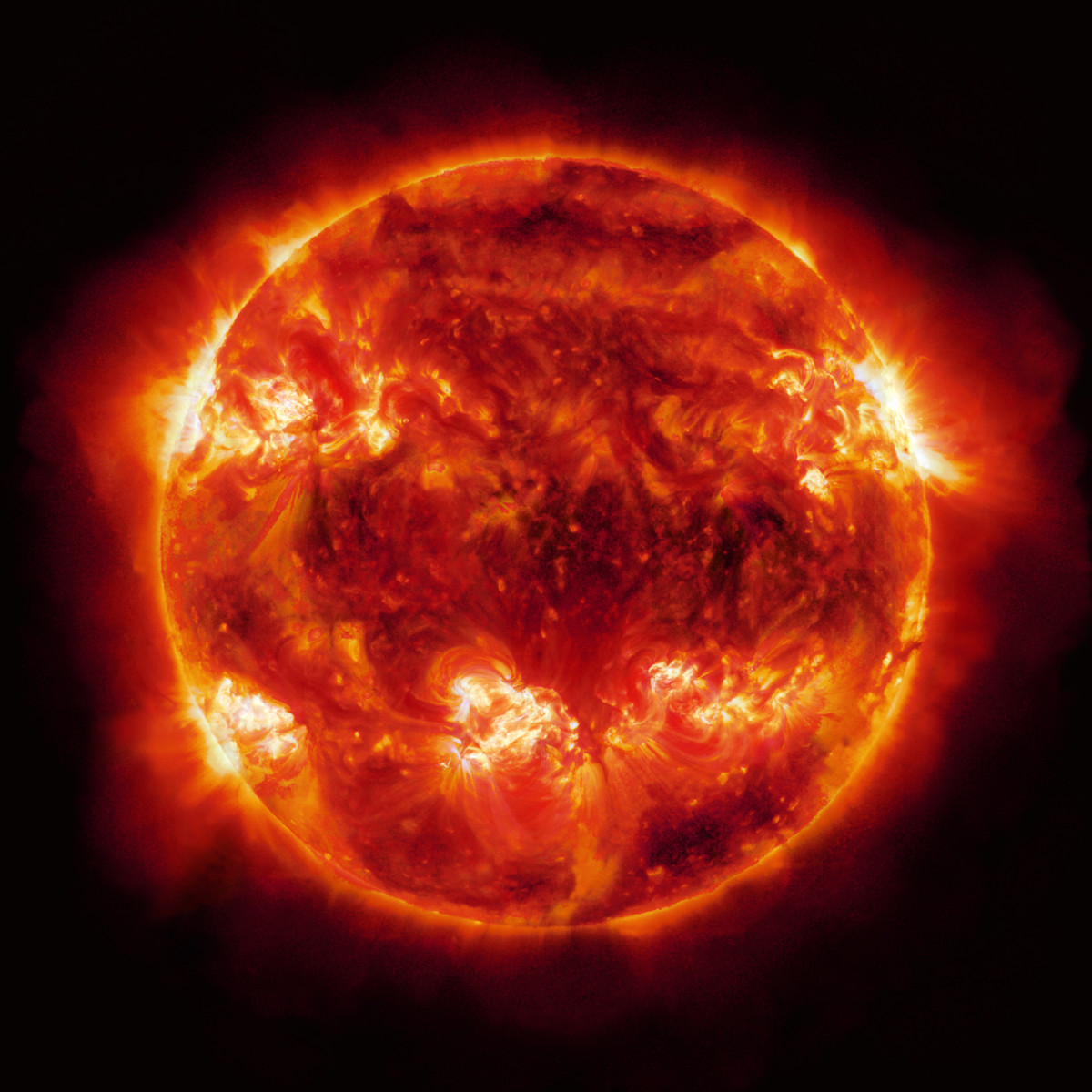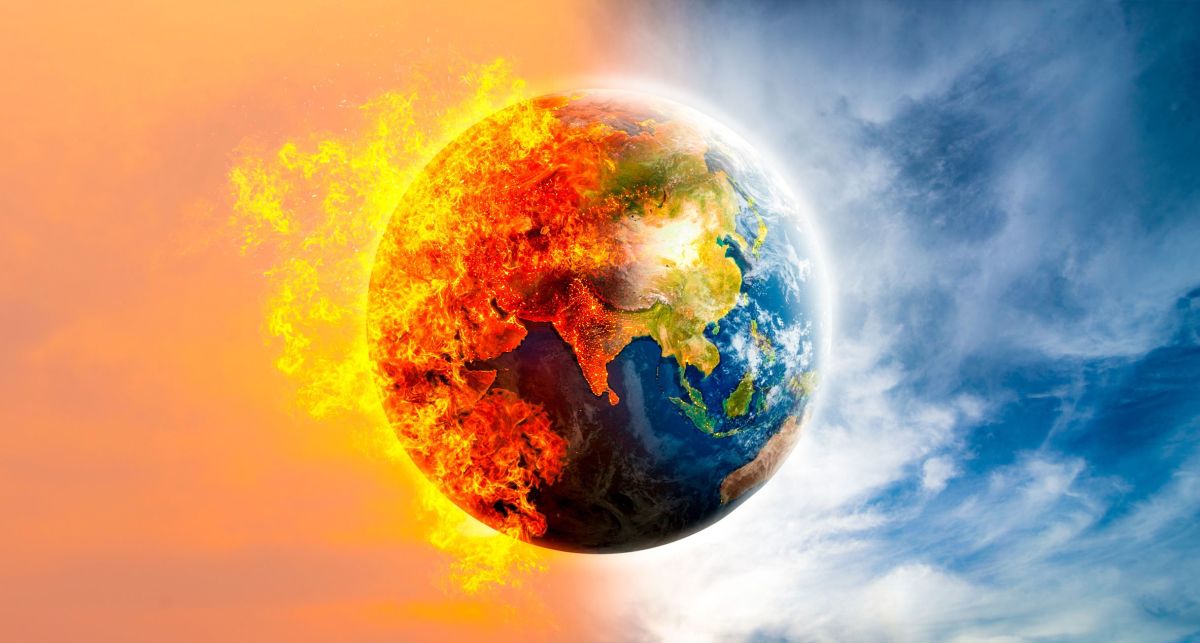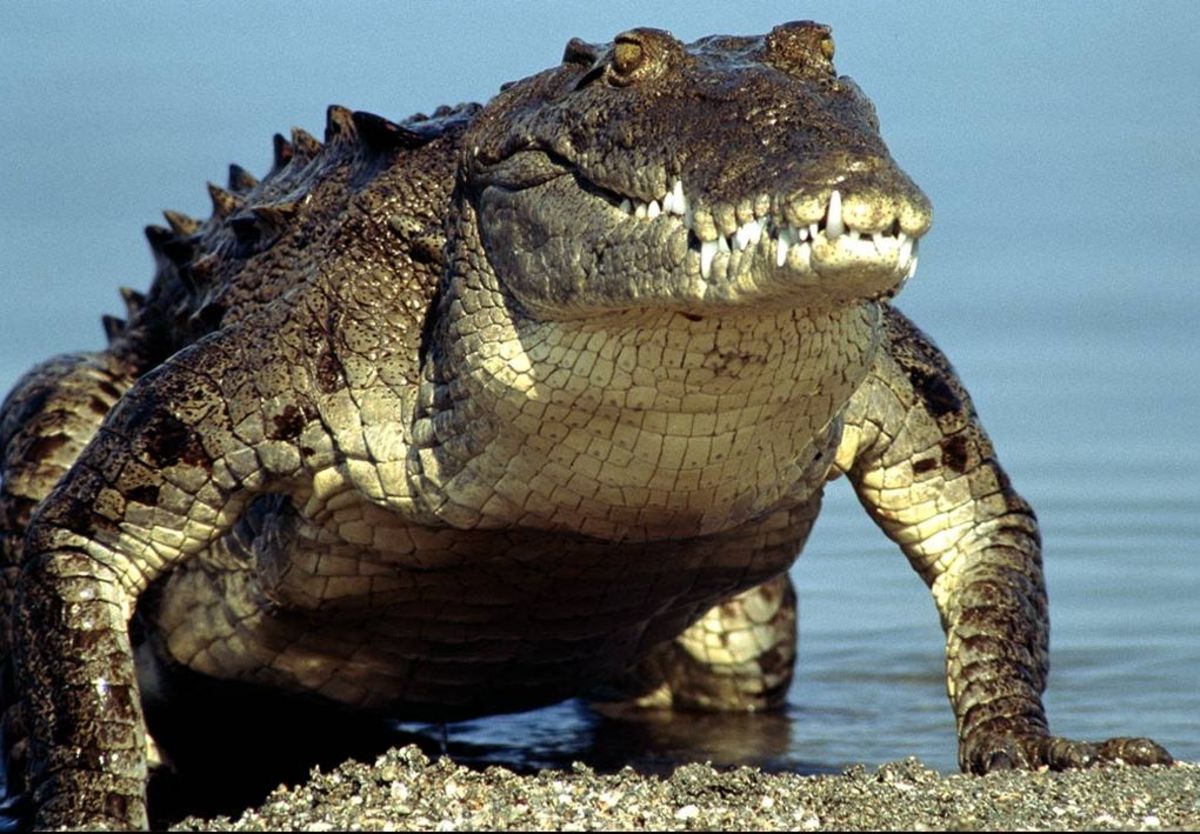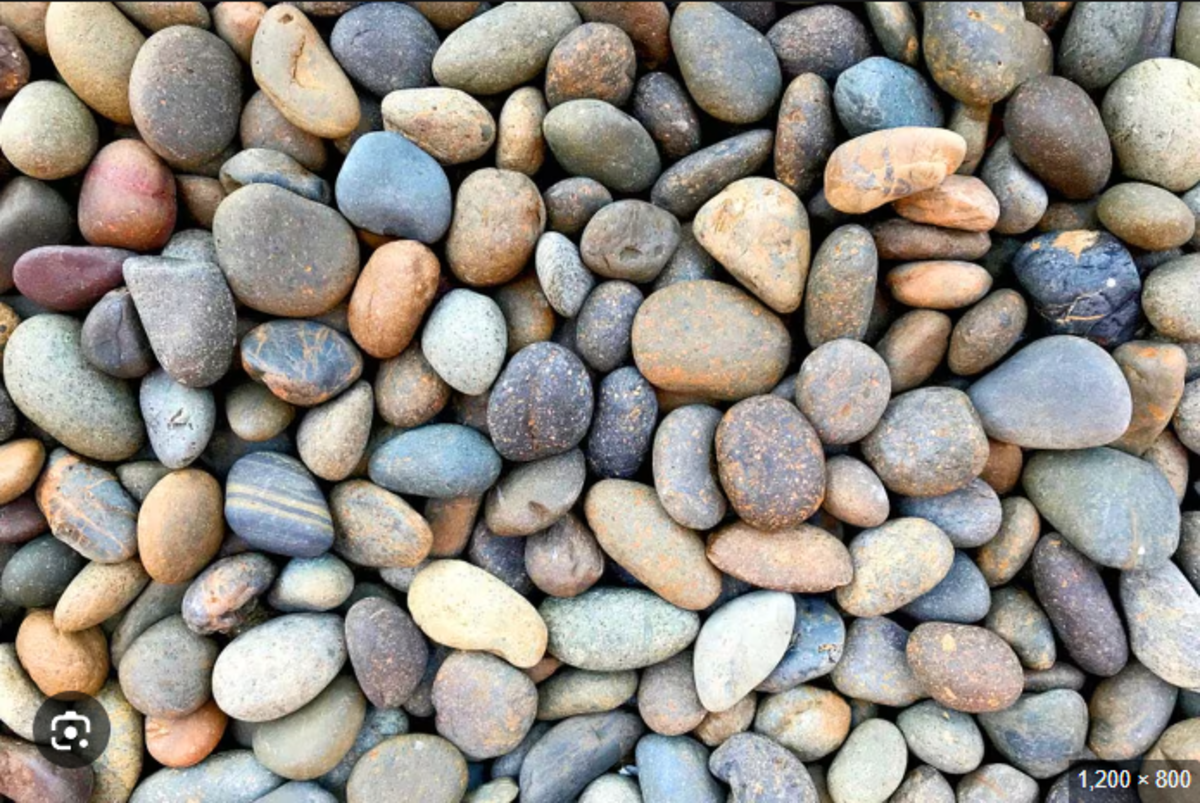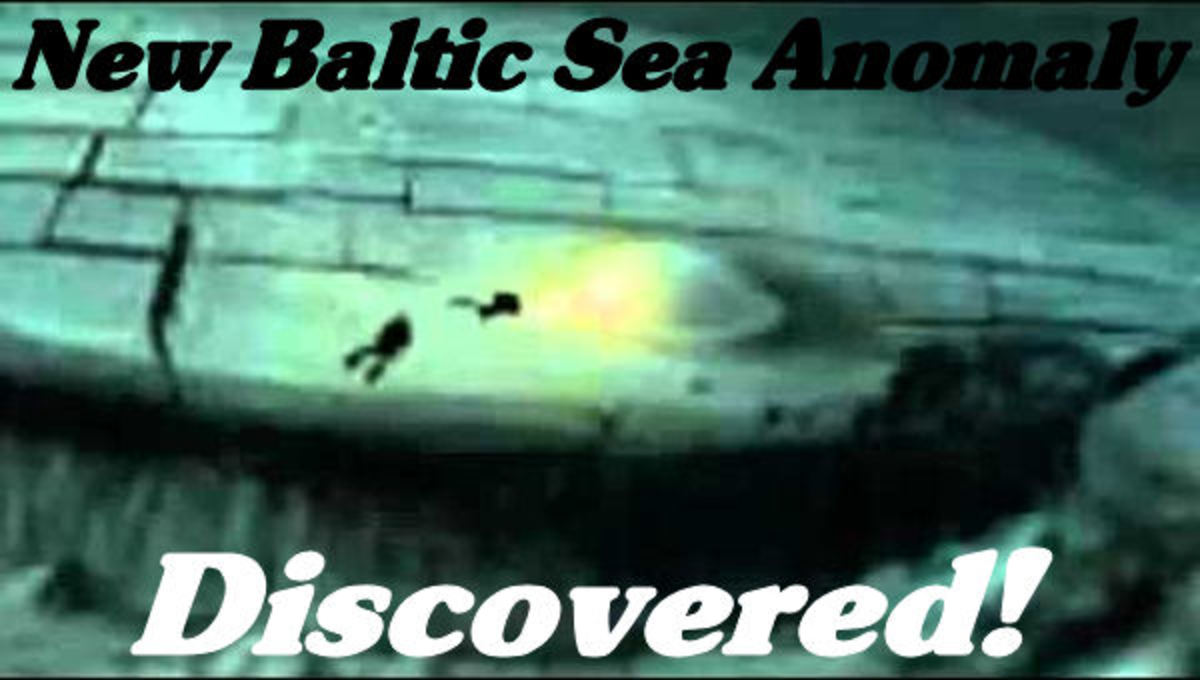Environment and Habitat Education
Wildlife Trapped in Pollution
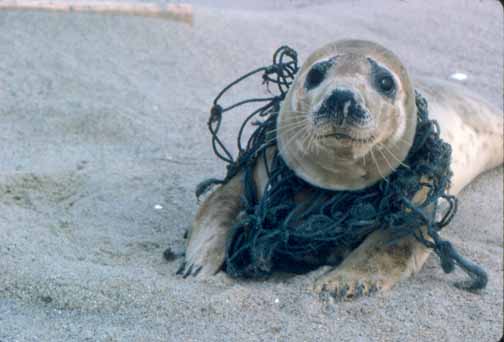
Heavy pollution
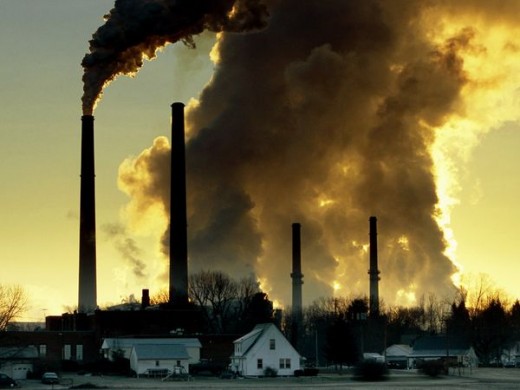
Environment and Habitat Education
As everyone knows, the climate change and warming of the Earth due to human technology is destroying the planet at an alarming rate. However, pollution and habitat destruction alone has been wiping out entire ecosystems and wildlife worldwide for a long time. There is nothing natural about what is occurring on the planet. Even those dumb enough not to see or believe the effects of Global Warming would surely admit that pollution, deforestation and the destruction of natural habitats is a major problem around the globe, no matter what region you live in.
As stated in scientific reports, the contamination of the hydrosphere and atmosphere, depletion of radiation-shielding stratospheric ozone, and anthropogenic global climate change are examples of changes induced by human environmental pollution. Fossil fuels used in ships, boats, vehicles, construction and farm equipment plays a major role in air pollution but there is so much focus on this that people don’t think much about all the factories worldwide that literally put out countless tons of pollution in different forms. An example would be all the mercury that factories put out in the air and water. Other pollutants are chemicals and chemical leaks, oil, drugs, garbage, human and farm animal waste, industrial waste, fertilizers, pesticides and even toxic heavy metals. Radioactive, chemical and organic waste is dumped and is in water everywhere including streams, aquifers, rivers, oceans, lakes, ponds, creeks and reservoirs. Coal burning power plants emit sulfur dioxide that combines with water vapor in the atmosphere and creates sulfuric acid. The results are in the form of corrosive acid rain. One of the other groups of man-made industrial chemicals, called chlorofluorocarbons (CFCs), has chemically destroyed the shielding ozone in the stratosphere overAntarctica. This created the "Ozone Hole." Human technology and pollution has replaced Earth’s natural cycle with a synthetic one. A result of pollution in the environment also causes mutations, disease, males becoming females in some species, dying vegetation and death of wildlife.
Habitat Destruction
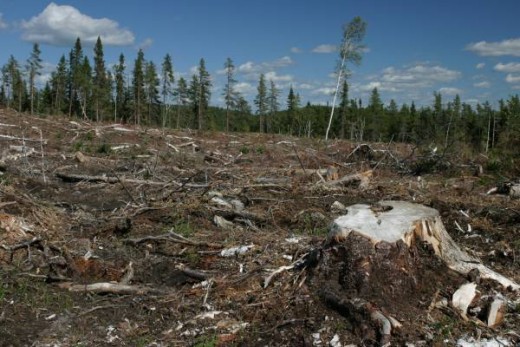
Aside from pollution, habitats of the world are being wiped out by agricultural development, construction of buildings and homes, mining, road construction, deforestation, damming rivers, draining swamps and natural disasters caused by human technology and intervention. Currently, half of what is left of the planet's plant and animal species live in rainforests. Every year, 15 million acres of the world’s tropical forests are logged. The following are just a few examples of habitat loss seen around the world. The current rate of tropical rainforest deforestation in South Americais 160,000 square kilometers per year. There is less than 0.1 % of dry forests left in Central America's PacificCoastand less than 8% in Madagascarthat remains from their original extents. Areas of high agricultural output tend to have the highest extent of habitat destruction. In the U.S., less than 25% of native vegetation remains in many parts of the East and Midwest. Only 15% of land area remains unmodified by human activities in all of Europe. The tallgrass prairies of North Americahave less than 3% of natural habitat remaining that has not been converted to farmland. More than 50% of wetlands in the U.S.have been destroyed in just the last 200 years. In Europe, between 60% and 70% of wetlands have been completely destroyed. In Britain, habitats which have been destroyed since World War 2 include 97% of the wild flower meadows and over 200,000 miles of hedgerows. Half of Britain’s ancient woodlands have disappeared, as well as 75% of heaths.The destruction of natural habitats in Europe is wiping out butterfly, beetle and dragonfly species across the region, which was reported in the updated European "Red List" of endangered species in 2010.
Deforestation is accelerating across Africa, killing wildlife and weakening the ability of the continent's ecosystems to withstand climate change. Over 90% of West Africa's original forest has been lost. "Africa is losing more than 4 million hectares (9.9 million acres) of forest every year. InAustralia, about 90% of native vegetation in the eastern temperate zone has been removed for agriculture, industry, transport and human habitation. About 50 percent ofAustralia's rainforests have been cleared and the proportion ofAustralia covered by forest or woodland has been reduced by more than one third.Australia has lost more plants and mammals to extinction than any other country and has more threatened animals than 98% of the world's countries. In thePhilippines, 90% of the coral reefs alone have been destroyed.Indonesia has lost up to 80% of its original forest habitat and continues to lose 6.2 million acres every year. AfterMalaysia and theUnited States,Indonesia has the third highest number of threatened species with 772 species on the list. To add to all of this, over 35% of mangrove ecosystems worldwide have been destroyed.
Melting Glaciers from Global Warming
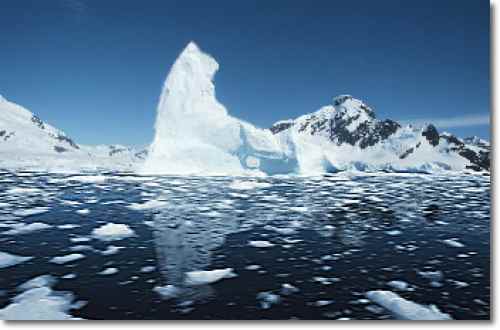
Human overpopulation and habitat destruction has decreased the biological diversity of the planet. When you combine this with climate change then you can clearly see why the planet’s time and all life on it is running out. The planet is warming, from the North Pole to South Pole, and everywhere in between. As stated on my nature website Caveman’s Nature Site http://wildcaveman.weebly.com/, the effects of global warming are devastating to both human and animal populations around the world. An insecure food supply, increased frequency and intensity of storms and rapidly rising sea levels are just a few of the effects we have seen over the years caused by global warming. Global warming does not occur evenly across the world. Temperature changes have been, and will be, much more extreme in theArctic and Antarctic. A 5 degree Fahrenheit warming for the whole world means only 1 degree at the equator, but 12 degrees at the poles. Seen and recorded around the world, global warming is causing glaciers to shrink, arctic ice recession, rising sea levels, flooding ( especially of coastal estuaries which kills wildlife ), increased inland and tropical storms, drought that has doubled since 1970, increased tornados, increased hurricanes, larger and more frequent fires, increased volcanic eruptions and the increase of earthquakes do to glacier movement. All of this is a big impact on the ecosystems, human economy (do to an unstable agriculture) and the wildlife. The disruption of breeding and migration patterns for some species, along with the expansion of harmful insects past their normal range, has also been an effect of global warming. Rapid environmental changes typically cause mass extinctions. One estimate is that less than 1% of the species that have existed on Earth are still living. The Holocene extinction is the period since the emergence of humans which has displayed an ongoing biodiversity reduction and an accompanying loss of genetic diversity. The reduction is caused primarily by human impacts, particularly habitat destruction. The planet and all life on it will not survive or recover unless there are great changes made in technology, habitat depletion and human overpopulation around the world. Most people are not aware of how quickly the planet is being destroyed or of the mass extinction underway.

